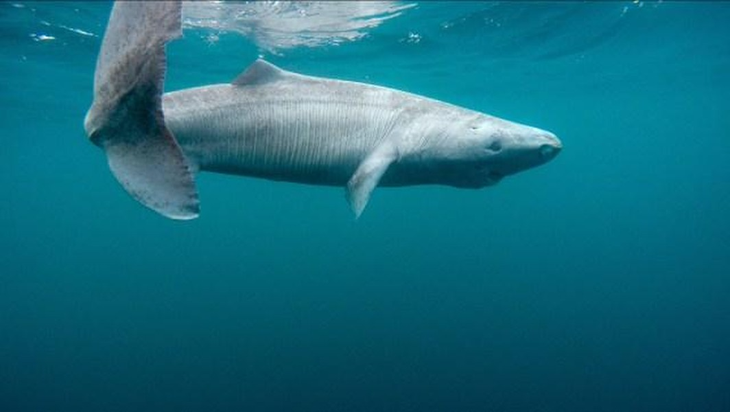 |
Greenland sharks inhabit the cold waters of the North Atlantic and Arctic Oceans, as well as the waters surrounding Greenland. They are large sharks, averaging 2.4–4.6 m in length. |
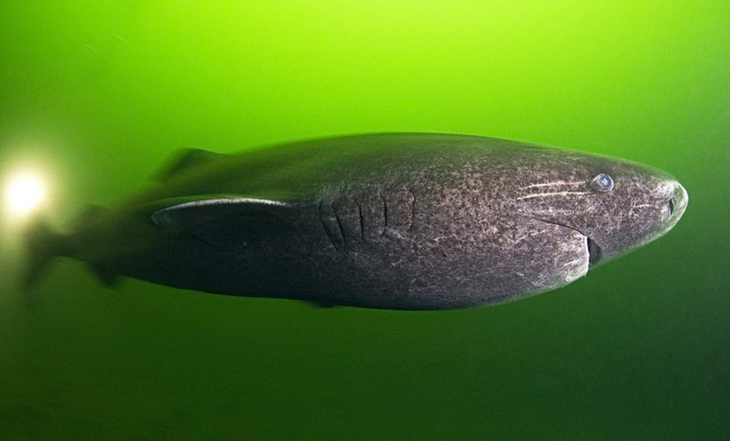 |
| Among the ancient sea monsters, the Greenland shark (Somniosus microcephalus) is one of the most impressive with its amazing longevity. |
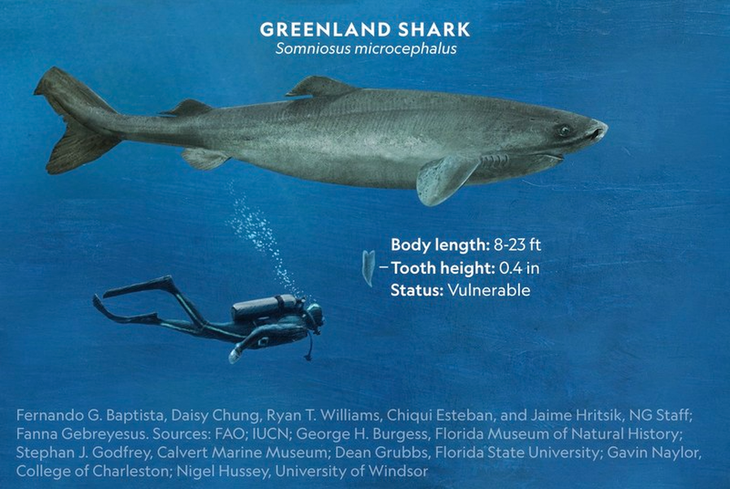 |
| Researchers determined that the average age of a group of 28 Greenland sharks was 272 years old. The oldest was estimated to be 392 years old, with a margin of error of -120 years. |
 |
| Scientists believe that the Greenland shark is not a fast swimmer, typically only 1.22 km/h with a maximum speed of 2.6 km/h. It is one of the slowest swimming shark species yet identified. |
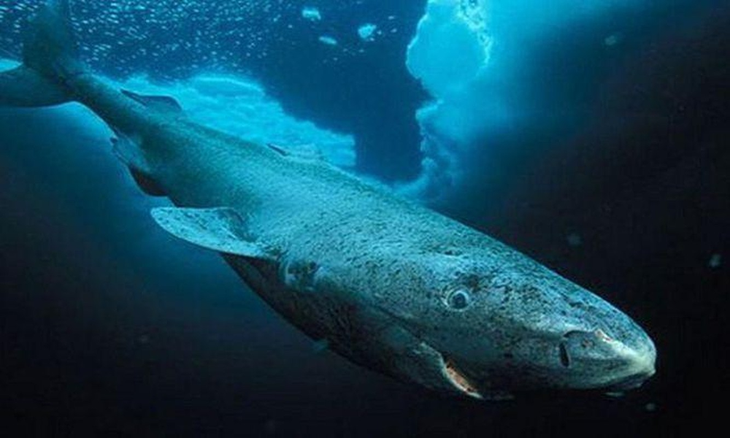 |
The food of this shark species is small fish, including sharks and seals. |
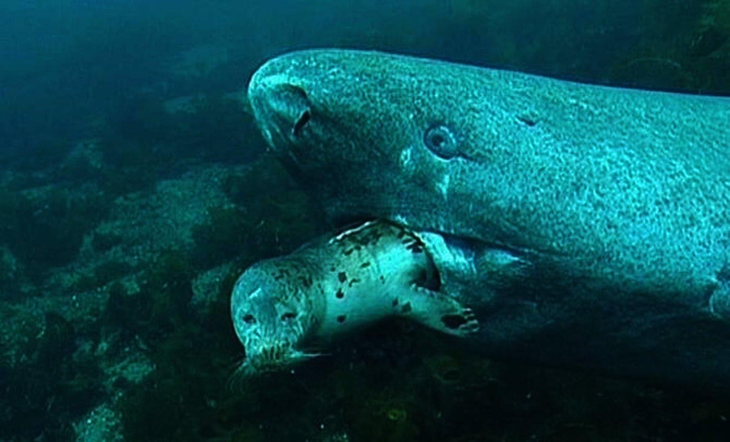 |
How Greenland sharks hunt seals remains a mystery. One theory is that they may attack while the seals are sleeping. |
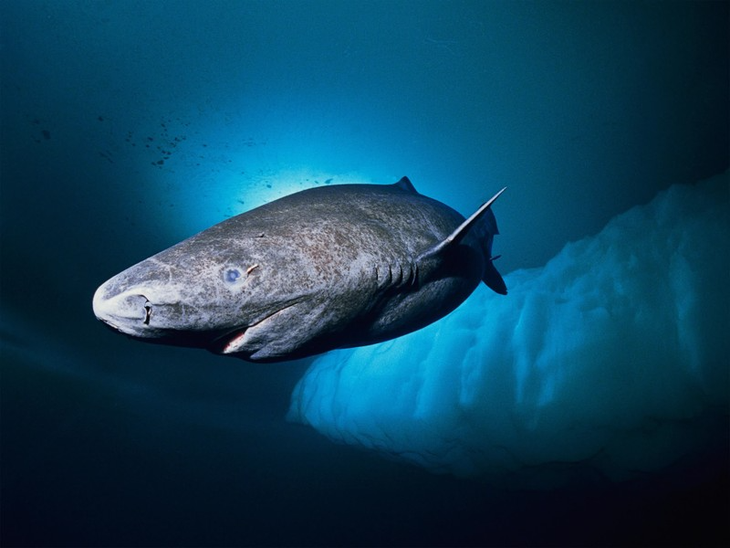 |
Many Greenland sharks cannot see, because they have a parasitic crustacean (Ommatokoita elongata) attached to their eyes. |
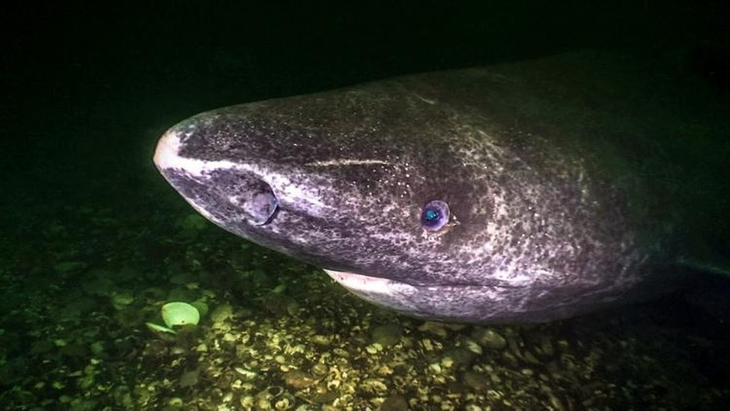 |
Parasites can severely damage the eyes, impairing the shark's vision. Despite poor eyesight, Greenland sharks can rely on their sense of smell to hunt.
|
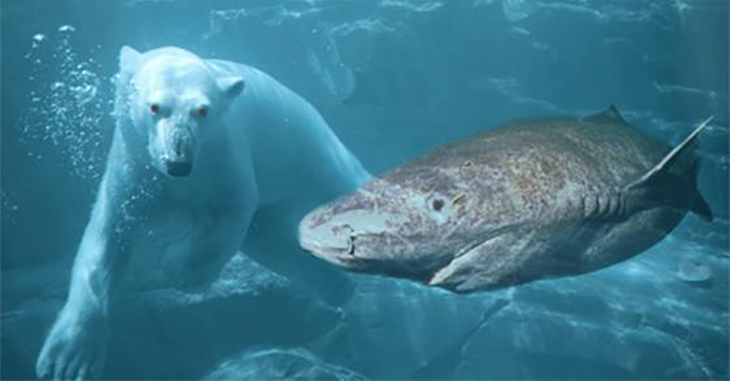 |
To this day, researchers are still searching for the answer to why this shark species has such an amazing lifespan. |
Dear readers, please watch the video : Sharks in the US have unusual behavior because of... "drug addiction"














![[Photo] Discover unique experiences at the first World Cultural Festival](https://vphoto.vietnam.vn/thumb/1200x675/vietnam/resource/IMAGE/2025/10/11/1760198064937_le-hoi-van-hoa-4199-3623-jpg.webp)
![[Photo] Opening of the World Cultural Festival in Hanoi](https://vphoto.vietnam.vn/thumb/1200x675/vietnam/resource/IMAGE/2025/10/10/1760113426728_ndo_br_lehoi-khaimac-jpg.webp)
![[Photo] General Secretary attends the parade to celebrate the 80th anniversary of the founding of the Korean Workers' Party](https://vphoto.vietnam.vn/thumb/1200x675/vietnam/resource/IMAGE/2025/10/11/1760150039564_vna-potal-tong-bi-thu-du-le-duyet-binh-ky-niem-80-nam-thanh-lap-dang-lao-dong-trieu-tien-8331994-jpg.webp)

















![[Photo] Ho Chi Minh City is brilliant with flags and flowers on the eve of the 1st Party Congress, term 2025-2030](https://vphoto.vietnam.vn/thumb/1200x675/vietnam/resource/IMAGE/2025/10/10/1760102923219_ndo_br_thiet-ke-chua-co-ten-43-png.webp)




































































Comment (0)